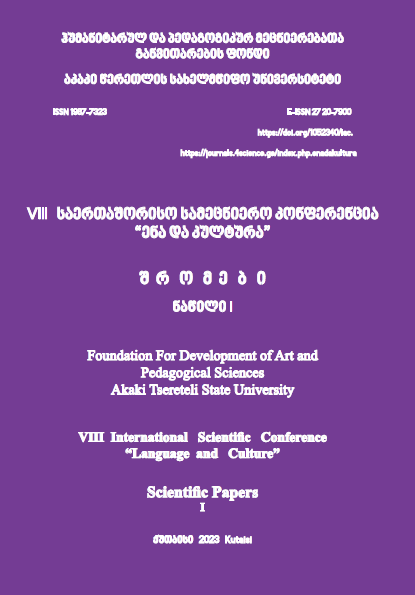Pre-Islamic Arabic Ḳasida 's Form and Function
DOI:
https://doi.org/10.52340/lac.2023.08.37Abstract
The Arabic Ḳasida is a very conventional piece of verse, with one rhyme, whatever its length, and in a uniform metre. Consequently, the charm and originality of certain of the themes employed cannot prevent boredom and monotony from reigning over these never-ending poems. These formal constraints were moreover resented by the poets themselves; they are without doubt the cause of the fragmentary character of many of the pieces, which took a particularly long time to compose. Tradition reports numerous examples of poets paralysed by the tyranny of the form. Ḳasida is a form of Arabic verse that was formed even in the pre-Islamic period and existed even until the 19th century. It went through several stages of formation, both in the pre-Islamic and early Islamic periods, this is what contributed to such a long history of its existence, because along with the form, it acquired the great function that led to the great role of poetry in the history and culture of the Arab world. The poem was an echo of the society of that time, both in the ruling and lower circles. In other words, it can be seen that the form of the poem created in the pre-Islamic period had a very large place in all of this, therefore, we can confidently say that the Ḳasida was not only in the Middle Ages one of the main drivers and carriers of the cultural layer of the Caliphate, but also in the pre-Islamic period itself. It held an important place when the social background was much different than after the spread of Islam. Moreover, since the poems would be in that context and accurately describe the events taking place there, then it is natural that the poet as the orator of the tribe had a great influence in his tribe, and if a good poem was written, it would become popular outside the tribe as well. Arabic qaṣīda means "intention" and the genre found use as a petition to a patron. A qaṣīda has a single presiding subject, logically developed and concluded. Often it is a panegyric, written in praise of a king or a nobleman, a genre known as madīḥ, meaning "praise". In his ninth-century "Book of Poetry and Poets" (Kitab al-shi'r wa-al-shu'ara') the Arabian writer Ibn Qutaybah describes the (Arabic) qasida as being constituted of three parts.
Downloads
References
გარდავაძე დ., უზრიული ღაზალი და გადმოცემები უზრიელ პოეტ-მიჯნურებზე. თბილისი 2018 წ.
ქუთელია 2010 - ქუთელია მ. (2010). არაბული „მუალაკებისა“ და „ათას ერთი ღამის“ ქართული თარგმანების შესახებ. ილია ჭავჭავაძის სახელობის ქუთაისის სამეცნიერო ბიბლიოთეკა, წელიწდეული II. საგამომცემლო ცენტრი ქუთაისი.
Bencheikh J.E. The Poetic Coterie of the Caliph Al-Mutawakkil (d. 247 H.): A Contribution to the Analysis of Authorities of Socio-Literary Legitimation. 1997.
Brill_-_The_Encyclopaedia_of_Islam_Vol_4
Margoliouth D.S. The origins of Arabic poetry, New York and London 1925.
Крачковский И.Ю., Арабская поэзия. // Избранние сочинениа. Т.II. Москва-ленинград. 1956
Монроу Д.Т. Устный характер доисламской поэзии. сб. Арабская среднивековая култура и литература. Москва. 1978.









